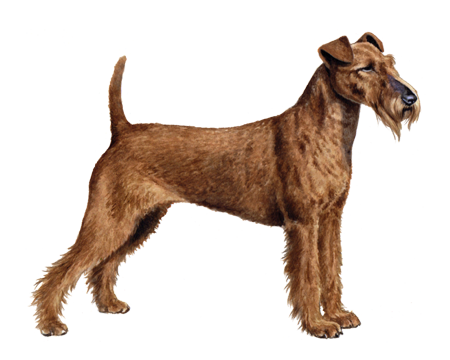
Prague Ratter
Known for their intelligent, curious nature, Prague Ratters are tiny (yet mighty) dogs. Though playful and full of spunk, they're typically eager to cuddle up to their favorite human once they burn off some energy.
Interested in discovering if your dog is a Prague Ratter?
Check out Wisdom Panel's DNA tests.

Prague Ratter Traits
General Appearance
The Prague Ratter's compact body is almost square-shaped. Differences between males and females are clearly defined.
Coat and Colouring
Often confused for a Chihuahua or Miniature Pinscher, the Ratter's coat has short, glossy hair. This breed also has a moderately long fringe on the ears, legs, and tail.
The most common coat color is black and tan. But other colors—including brown and tan, blue and tan, lilac and tan, yellow, pink, red, and merle—are possible.
Distinctive Physical Traits
Prague Ratters have rounded skulls, dark, wide-set eyes, and triangular, naturally erect ears. Their tails—carried slightly upright—may curve over their backs in a semicircle.
Prague Ratter Temperament
Ratters are social dogs that thrive on strong and dependable relationships with their humans. They love receiving attention and enjoy being around kids.
However, due to their small size, these dogs should be supervised when with young children. Though generally friendly, Prague Ratters can be a bit reserved with strangers. They may also be intimidated by other dogs—which may result in confrontations.
This breed adapts well to full-time indoor and apartment living. Though they love to play (and do so quite energetically), Prague Ratters are more than happy to be a lap warmer during downtime. Unlike other small dogs that can be yappy, the Ratter is typically a very quiet dog.


Prague Ratter History
The Prague Ratter—also known as the Pražský krysařík—is rarely seen outside the breed's native Czech Republic. Considered the smallest dog breed in the world (based on height), these petite pups only grow to be 20-23 cm tall.
During the Middle Ages, the Ratter was common in the rodent-infested palaces of central Europe. By the time of Polish King Boleslaw II's rule (1058-1081), the Ratter was already an established breed. The king grew fond of these little dogs and imported two of them from Bohemia.
Some of the Ratter's allure initially wore off when the Miniature Pinscher (thought to be a more fashionable breed) arrived on the scene. But the tenacious dogs held on and eventually had a small resurgence of popularity in the 1980s—though they remain quite rare today.
Prague Ratter Care
Nutrition
Little dogs like Ratters require more calories per pound of body weight than larger dogs. For this reason, it's best to select a food created for small breeds (as well as your dog's specific life stage). These diets will have the appropriate blend of nutrients, and a smaller kibble size helps Prague Ratters better chew and digest their food.
Be sure to keep an eye on the number of treats you're giving your Ratter. Even a couple of little snacks can lead to weight gain.
Grooming
Grooming requirements for a Ratter are relatively minimal. This breed usually only needs an occasional brushing and a once-over with a damp washcloth to stay clean. Nail trims and ear cleanings should also be part of the home care routine.
All dogs require regular dental care, including at-home teeth brushing and professional dental cleanings. Prague Ratters are particularly susceptible to dental issues due to their small mouths and crowded teeth. So, they may require more frequent cleanings beginning at an early age.
Exercise
Prague Ratters don't need much vigorous exercise. But they do enjoy daily play sessions and the chance to run and frolic. These lively dogs love to jump straight up in the air and perform acrobatic turns. Some can even climb trees! So, be sure to supervise any activities and limit outdoor play to a safe environment.
Training
Eager to learn, Ratters generally respond well to training and commands. Positive reinforcement using treats or a favorite toy is often the most effective way to teach this breed basic obedience or tricks.

Prague Ratter Genetic Health Conditions
-
Hyperuricosuria
Hyperuricosuria (HUU) is a condition that predisposes affected dogs to the formation of urinary stones, such as kidney or bladder stones.
Knowing if your Prague Ratter is a carrier or at-risk for these conditions can help you and your veterinarian plan for your pup's lifelong care. With Wisdom Panel™ Premium, you can get results for over 200 genetic health tests.
Breed Group
Terrier
The Terrier Group ancestors were bred to hunt and kill vermin. They are often characterized as feisty and energetic dogs whose sizes range from fairly small to much larger.
Resources
http://www.fci.be/Nomenclature/Standards/363g09-en.pdf
http://praguerattersclub.com/about
https://www.arba.org/Pages/Prague_ratter.htm
Reviewed 5 September 2020 by Annette Louviere, DVM































































